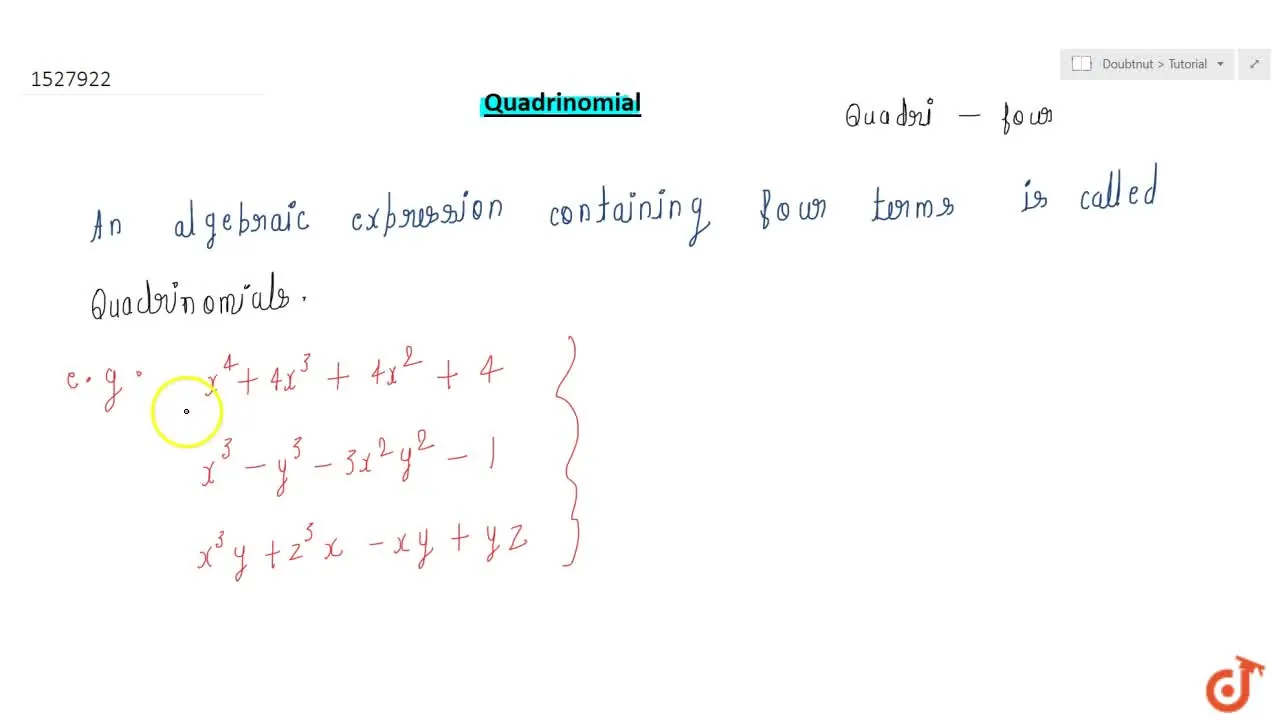Quadrinomial an algebraic expression four terms is called a quadrinomial.
Video Solution
|
Answer
Step by step video & image solution for Quadrinomial an algebraic expression four terms is called a quadrinomial. by Maths experts to help you in doubts & scoring excellent marks in Class 7 exams.
Updated on:21/07/2023
Similar Questions
Binomials
View SolutionTrinomial .
View SolutionBinomial An algebraic expression containing two terms is called a binomial.
View SolutionTrinomial An algebraic expression containing three terms is called a trinomial.
View SolutionAn algebraic expression containing three terms is called a
View SolutionMonomial
View SolutionAverage of algebraic expression
View SolutionSubtraction of algebraic expressions
View SolutionMonomial An algebraic expression containing only one term is called a monomial.
View SolutionDefinition of algebraic expressions
View Solution


